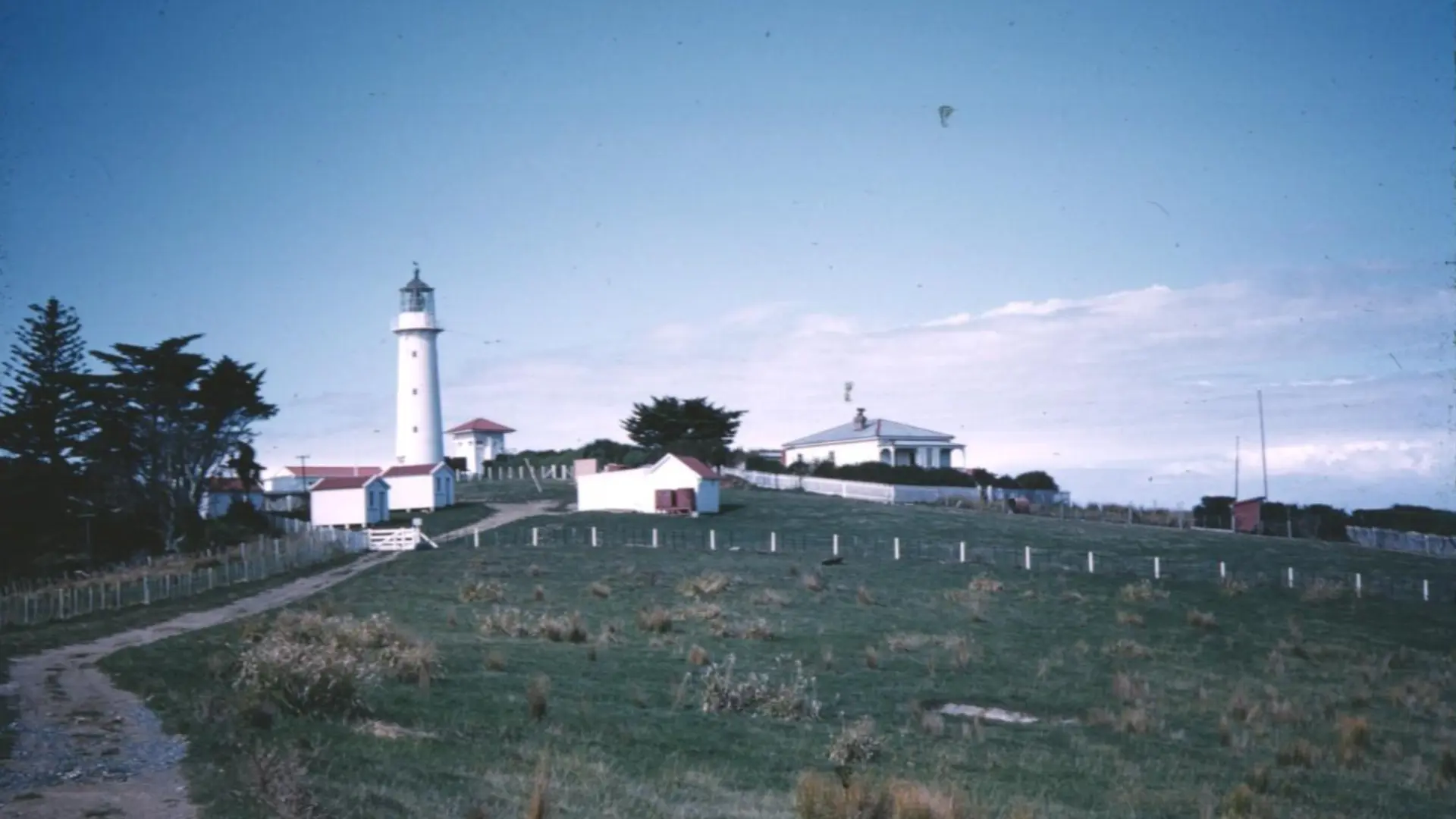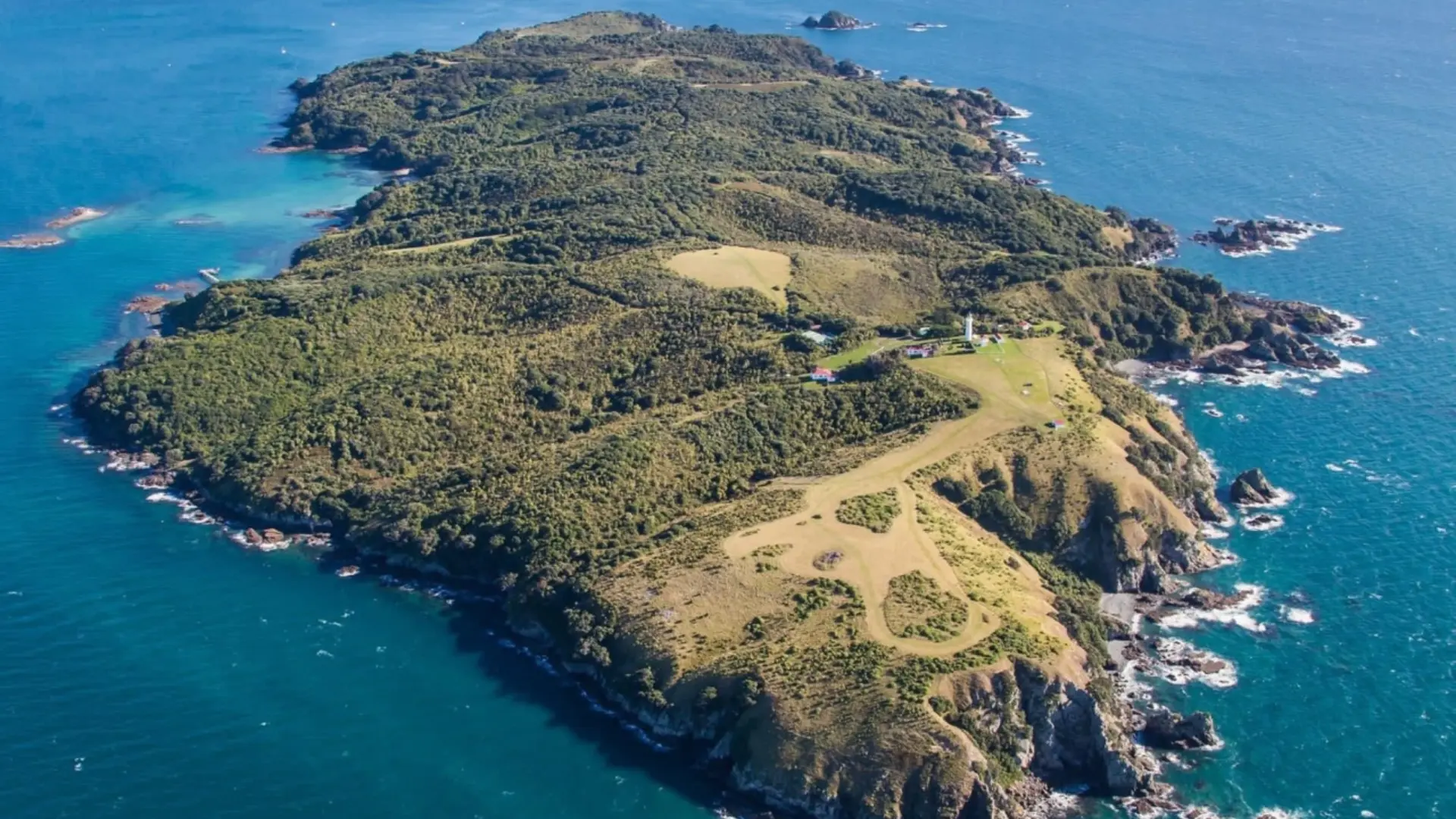How did old lighthouses rotate the lens?
Before the introduction of electricity, some lighthouses had a clockwork mechanism that rotated the lens, similar to how an upright grandfather clock is wound (only a much bigger, of course). The mechanism consisted of a large weight attached by a cable through the center of the lighthouse to the top where the cable wrapped around a barrel or drum
In the 1890s, some keepers began floating their lenses in liquid mercury. The metal spun more easily in mercury, helping the light to rotate and keeping it level, requiring less frequent winding.
Lenses were ground by many methods. As automation was in its infancy, one method employed was to attach a grinding wheel to a horse, (sometimes called a ‘gin’), the same method used for griding corn. The gantry on display at Tiritir Matangi was found in Pureora Forest northwest of Lake Taupo!
Signal station
The Tiritiri Matangi signal station is separate separate from the lighthouse. The station communicated with shipping, initially using signal flags and later by radio. Flags were flown from a tall white mast just south of the lighthouse (soon to be re-instated).
To get messages to Auckland, which was not in line of view, large wicker baskets were put up the mast to signal Mt Victoria, which had a line of sight to the port.
The present signal tower was built in 1908 and may have been only one storey initially but was raised up to two storeys around 1913. It has been restored and is often open for visitors. It is still used today for weather service.
Lighthouse Timeline
- 1841: NZ Government assumes ownership of Tiritiri Matangi as a lighthouse reserve
- 1864: Lighthouse and two keepers’ cottages built
- 1865: Lighthouse first illuminated on 1 January 1865, burning colza (canola) oil
- 1879: Lighthouse converted to paraffin oil
- 1898: ‘Morse House’ built. Telegraphic line to Waiwera installed.
- 1912: Signal station built or modified for Auckland Harbour Board (AHB). Two signalmen and two keepers in residence
- 1912: Chief Signalman’s (Principal Keeper’s) house built and ‘The Fourth House’ brought from Grey’s Ave Auckland.
- 1916: Light converted to incandescent kerosene burner
- 1918: Present two keepers’ houses built and Slaughter’s Gun Cotton Fog Signal installed.
- 1925: Lighthouse automated with a flashing acetylene light. Island under AHB administration – three signalmen. Keepers withdrawn.
- 1935: Diaphonic foghorn and radio beacon (navigational aid) installed
- 1939: Royal NZ Naval Reservists arrive
- 1940: Port War Signal Station (PWSS) built near lighthouse
- 1941: Army Fortress Observation Post (FOP) built
- 1942: PWSS building moved to centre of island
- 1945: AHB returns after the War (three signalmen)
- 1947: AHB closes signal station. Lighthouse keepers return. Tower painted white
- 1950s: Workshop and engine shed built for three 10/2 Lister diesel generators
- 1955: Diesel generator installed. Electricity powers the light.
- 1954–c1970: Fred Ladd and Bruce Packer operate Tourist Air Travel Ltd
- c1955: Principal Keeper’s house demolished
- 1957: Radio beacon deactivated
- 1962: Lenses on lighthouse adjusted, making existing light brighter
- 1963: Relieving keepers’ quarters (‘The Bach’) built.
- 1965: Davis Marine Light (11 million candlepower (cp) illuminated
- 1967: Underwater cable from Whangaparaoa to Hobbs Beach installed
- 1975: Lighthouse staff reduced to one keeper
- 1984: Light automated with quartz iodine light (1.6 million cp) and electronic foghorn installed
- 1984: Last keeper (Ray Walter) withdrawn
- 1989: Mains power lost when cable fails for third time; light reverts to diesel generator
- 1990: Lighthouse solar-powered, automated and de-manned
- 1991: New generator installed. Power part solar, part diesel. Light 300,000 cp
- 1995: Lighthouse closed to public
- 1998: New wharf built
- 2002: Lighthouse boosted to 1.2 million





